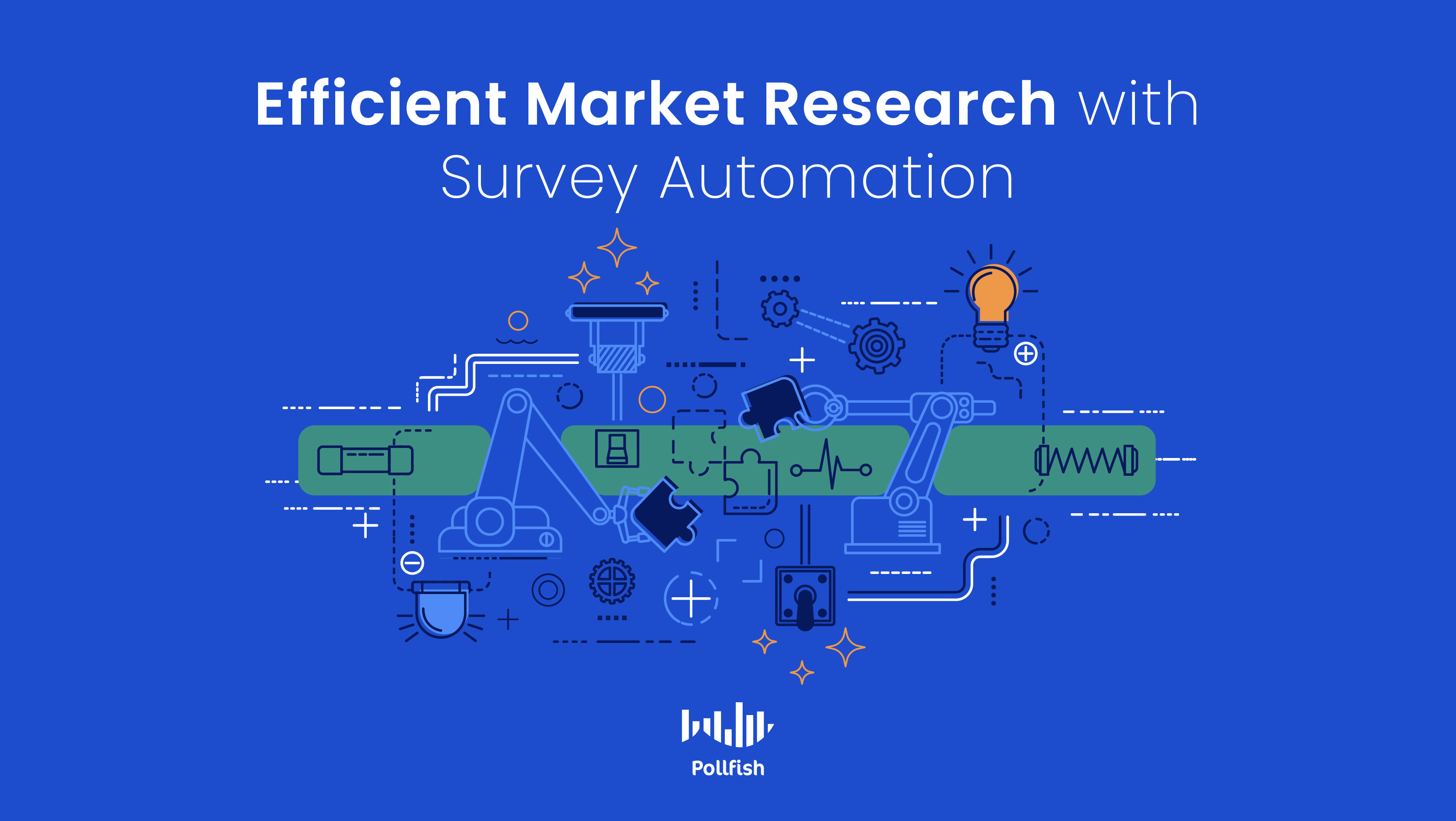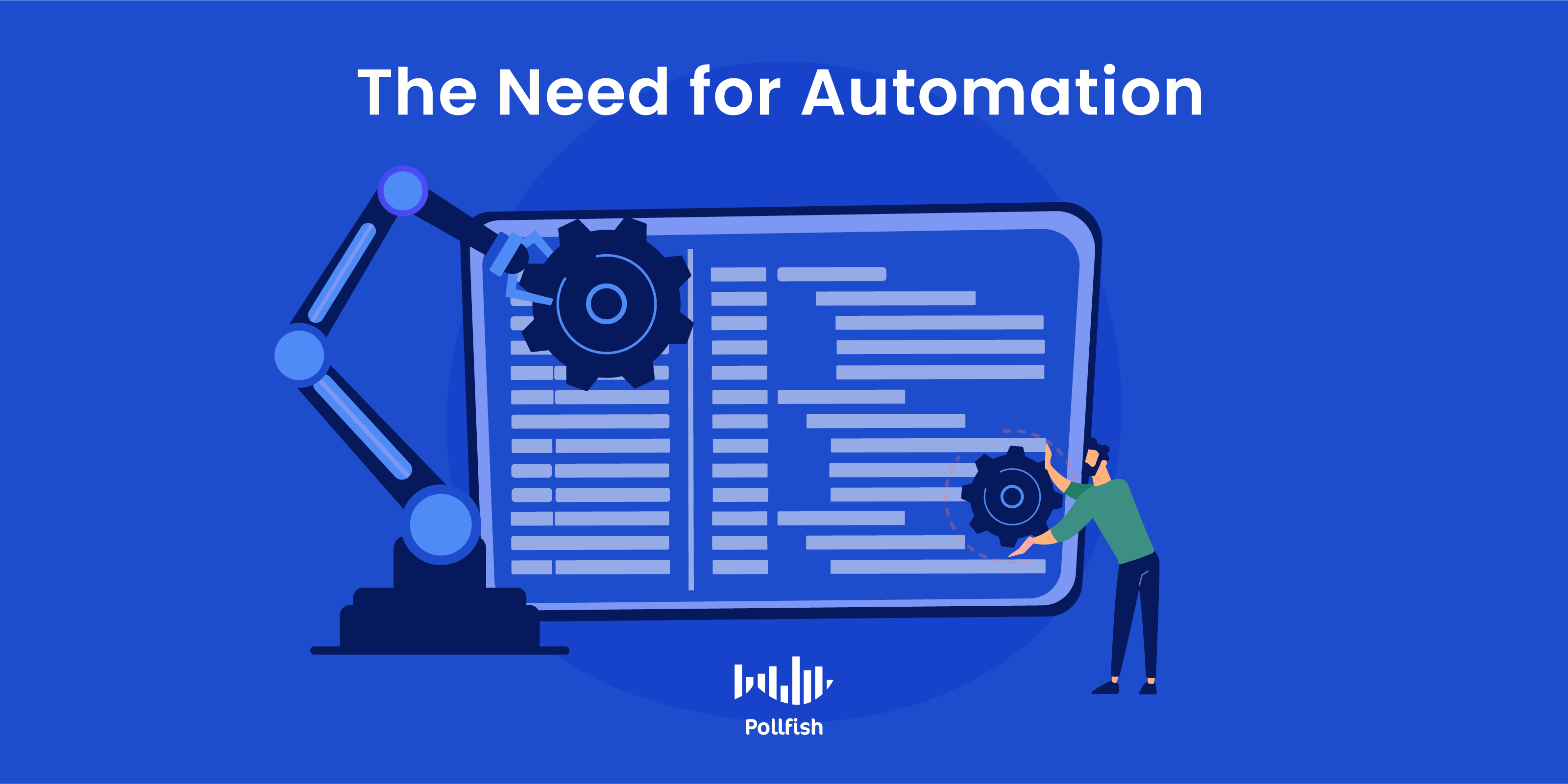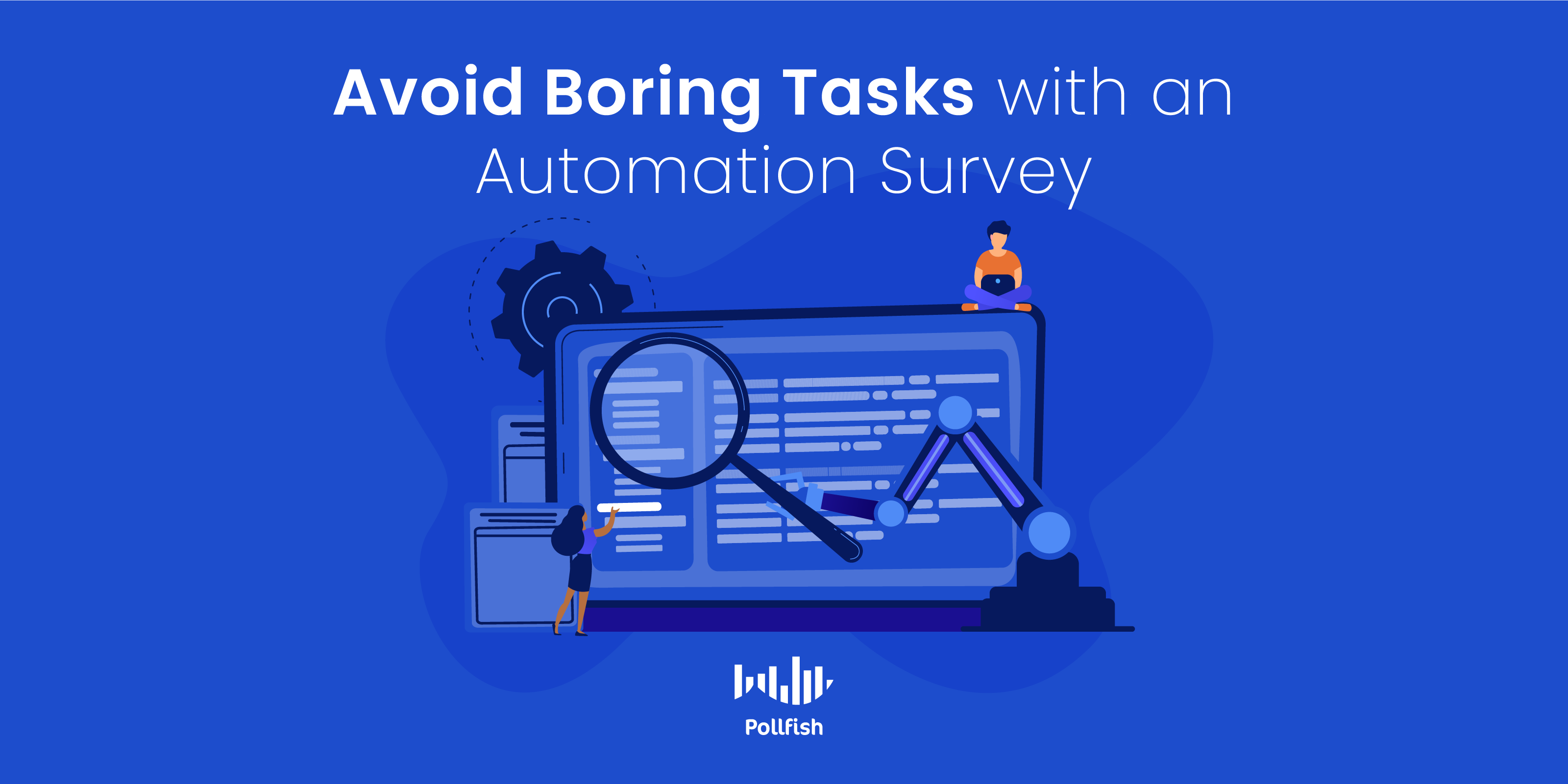Create Efficiency in Market Research with an Automation Survey

Automation has been propelling technologies ever since its onset and market research is no exception. With an automation survey, market researchers can support a wide variety of effective survey studies and much more.
It goes beyond simply creating surveys, as it can support all the main types of research, including frequency-based research such as longitudinal. cohort and retrospective research.
This is because an automation survey can automate a wide variety of tasks that would otherwise be tedious and time-consuming.
This article elucidates the meaning and capabilities of an automation survey, so that you can create efficiency in market research.
Defining an Automation Survey
An automation survey denotes a survey or survey tool, i.e., the platform that enables or runs primarily on survey automation.
Survey automation refers to the automation of surveys, which involves all of their key components, such as the screener and the questionnaire, made possible through an online survey platform, with predefined rules, conditions and workflows.
In this context, an automation survey is thereby not merely a survey or survey type; rather it is a system that incorporates automation in various aspects. In turn, this minimizes the labor that market researchers would need to pour into their market research projects.
This kind of survey — or survey technique rather — allows market researchers to create effective surveys for all kinds of research campaigns. It is the chief manifestation of the adoption of automation in market research.
The Need For Automation
75% of companies use automation, specifically, marketing automation for their daily operations. 31% of businesses have automated at least one function a rise from years ago. These statistics point to a blossoming state of automation.
Automation has seen an increase in adaptation across businesses and industries — and for good reason. It offers researchers and employers of various industries to avoid doing routine, manual work that can easily be completed by robots and computers.

Aside from this self-evident advantage, which comprises the core of automation, automation presents other key advantages. They include the following:
- Allows you to extract large amounts of data in small time periods.
- This is especially crucial for market research.
- Frees up time so that workers can exert their efforts towards priorities.
- Helps avoid burnout in this way.
- Creates a more efficient use of materials.
- Forming a better quality of output if used correctly.
- Enables researchers to spend more time analyzing results to make better business decisions.
- Certain automation capabilities allow researchers to avoid survey bias.
- Sets a faster follow-up in motion in the research campaign.
- Gains responses in real-time with consistency in data quality.
- Allows you to engage a wide range of audiences for your target market and its segments.
- On a larger scale, automation has been discovered to boost productivity and raise the GDP.
The Power of an Automation Survey for Your Surveys
Survey automation works by way of the needs and preferences of your survey campaign. This is because the survey platform you use should enable you to set all the conditions you require of your respondents.
The Survey Screener: Automating Participation
A strong survey platform should have a screener that works by way of automation. This facilitates all the requirements of your respondents to be automatically collected. Thanks to this kind of automation, you don’t have to search for respondents manually on the Internet and implore them to take your survey.
Additionally, if that wasn’t enough of a relief, you don’t have to check the qualification of all respondents who enter a survey. This is a major convenience since there are many conditions you can set to qualify or disqualify potential respondents. For example, you may need to survey men and women ages 18- 50 in a particular area. Automation allows you to do so by presetting demographics.
You can also segment your survey in a hyper-granular way by adding screening questions with their permissible answers. This way, you can allow respondents to take the survey via behaviors, attitudes, psychographics and virtually anything else as it pertains to the respondent.
Quotas: Allowing You to gather the Right Amount of Participants
Automating the gathering and entry of qualified respondents is a major advantage of the automation survey. It also does more via quotas. A quota is a set quantity of a particular feature (response) in your survey.
A strong automation survey ought to include quotas in the screener, so you wield full control over who takes part. This means, aside from who participates, you’ll get to control how much. For example, you can set your survey to an overall quota of 2,000 completes in most survey platforms.
But a true automation survey should allow you to take this concept further.
Such a survey should allow you to add quotas on all the respondent qualification categories. For example, your study may require surveying more people of a particular ethnic background or age. You should be able to allot quotas to all the respondent qualification categories: demographics, geolocation, mobile usage screening and more.
Additionally, an automation survey should allow you to automate the number of responses per screening answer. If your survey permits respondents of multiple screening answers to take part in the survey, you should be able to assign each screening to answer a quota. This is one of the most granular ways to gather the correct respondents, and more precisely the correct amount.
It becomes possible due to automation. But there’s so much more that this survey tool can do for your market research; it can automate a wide variety of tasks to ease your workload and gain accurate results.
Boring Tasks That a Survey Can Automate
There are several boring tasks in the market research process that an automation survey can get rid of, through the prowess of automation.
The following enumerates some of these key tasks. Bear in mind that not all automation surveys are built alike — therefore, not all such surveys offer the same kind of automation capabilities.

- Skip Logic: Also known as survey routing, this is a valuable function for both retaining responses (thus lowering survey attrition) as well as giving you the correct insights.
- This allows you to send respondents to relevant questions based on their responses to a previous question.
- Deployment: Not only won’t you have to fret about which networks, websites and apps will allow you to distribute your surveys, you won’t have to manually send them out to the networks, as the survey automates all of this.
- Iteration: An automation survey will not stop iterating across different websites and apps until it fulfills all of its quotas. Thus, you can rest assured that you’ll never come up short.
- Data Organization: An automated survey does not merely cull data. It will organize everything for you, possibly rendering you to rethink storing it in a spreadsheet.
- It should also give you the option of crosstabs and other kinds of exports of organized data.
- Visualizations: Data will not be displayed in just one manner. Instead, you can view it in a variety of formats.
- This is because this data should be displayed in various visualizations: pie charts, bar graphs and spreadsheet-esque displays which feature the most popular to least popular answers.
- Quality Checks & Disqualifications: Even if your respondents pass the screener portion, their surveys may not count towards the final number of completes/quotas. This is because some survey respondents that you should keep an eye on providing faulty, inaccurate answers.
- Instead of gathering low-quality data to be filtered by in-house experts after a survey obtains all of its quotas, an automated survey includes quality checks as the survey is running. These will automatically disqualify respondents who use a VPN, provide gibberish answers, along with other faulty data.
- Incentives: Most people don’t have time to spare; incentives are one of the most powerful motivators for online users.
- This survey tool incentivizes respondents right then and there, without the need to manually reach out to them, thereby keeping their identities anonymous.
The Disadvantages of the Automation Survey
While this tool allows you to perform market research across verticals and research campaigns, it too has several drawbacks. As a business owner, market researcher or general researcher, you ought to be wary of them all.
Here are some of the shortfalls of automated surveys:
- Subject to survey attrition: No survey form is immune to attrition. Some respondents will simply drop out before completing their survey. There are certain best practices that can help you avoid this.
- Cannot undo an automated task: Once you preset a certain function, be it a quota, a question or a skip logic rule, it cannot be undone. If there is some automated feature you need to redo, you would need to run another survey.
- Vulnerable to Basic Insight: While you can create qualitative surveys, they may not be as insightful as a phone or in-person interview.
- You can correct this with open-ended questions, but with a lack of an interviewer, you won’t be able to probe further on the answers to these.
Excelling Market Research with Automation
Automation is here to stay; luckily the market research space can benefit from it with the automation survey. To reiterate, this is not merely a survey type, as it can refer to a platform along with its native surveys.
While many online survey platforms offer automated surveys, they are not equivalent on any front, including on their automation capabilities. The proper automated survey platform will allow you to complete all the functions stated in this article, along with allowing you to reap all of the aforementioned benefits.
As such, you ought to choose wisely in your automated survey tool; consider it the driving force behind all your market research endeavors. Even if you decide to conduct experimental research, a survey is still the most substantial tool for amassing primary research about your target market and all else.
Pollfish Marketing Team
Ready to Try Pollfish?
Create your survey with AI, target high-quality respondents starting at $0.95 per complete, and start getting results in just minutes in real-time. From running a simple product concept survey to managing a constant stream of trackers for dozens of clients in dozens of countries, we’ve got you.
